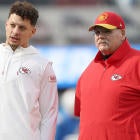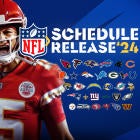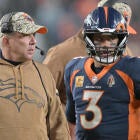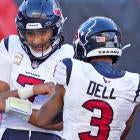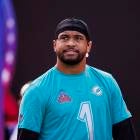Most fans probably think putting together the best 53-man roster under the salary cap with actual cap numbers wouldn't be too hard. Without any other parameters for the selection process that may be the case. The end result would likely be a roster that resembles the most recent All-Pro team.
It can be a different story with the following ground rules, which are designed to help limit the ability to create an embarrassment of riches at most positions, provide more realism and make the selection process a lot more challenging than it would have been otherwise.
Guidelines used to build this roster
1. Keep it under the cap: The salary cap for the roster is $161.66 million. The actual NFL salary cap is $155.27 million for this year. The number being used is the league's average adjusted salary cap according to NFLPA data. Each NFL team's working salary cap varies largely because unused cap room can be carried over from one year to the next.
For example, the Jacksonville Jaguars have league's highest adjusted salary cap at $190.86 million and the Baltimore Ravens have the lowest of $154.05 million. This is because of incentives earned during the 2015 season that weren't counting on Baltimore's cap being accounted for while the small amount of cap room carried over from last year couldn't cover the figure and left a small deficit.
2. Rookies are part of the equation: The NFL Draft is an essential element of roster building for teams so it's here, too. One player from each round of 2016 draft must be on the roster. The number requirement drops by one player for each year of the preceding three drafts (2013-2015). There's also a limit of one player per round. Thus, only four 2013 draft picks are required but one player per round is permissible. The 2014 first round is particularly strong with Pro Bowlers Anthony Barr, Odell Beckham, Jr., Aaron Donald and Khalil Mack. The round limitation forces a choice to be made between them. There's one other draft pick constraint. Only one 2012 first round pick that signed a contract extension with his team is allowed, which means Fletcher Cox, Luke Kuechly and Harrison Smith can't be teammates.
3. The backups are really backups: The backups at each position are limited to players that aren't established starters so young veterans cracking the lineup for the first time are fair game. Players competing for starting jobs or where there's a "by committee approach" at a position, usually running back, are also acceptable. A backfield containing Todd Gurley and Le'Veon Bell is prohibited since both are workhorse or every down running backs. There's one big allowance being made defensively. Three starting cornerbacks are acceptable without sacrificing a starter in a traditional base defense since five or more defensive backs were used over 60 percent of the time in 2015 according to Pro Football Focus. The result is 12 defensive starters.
4. Tags, too: Choosing a player that was given a franchise or transition designation in 2016 is optional. However, only one player receiving a 2016 designation can be selected.
5. All 32 teams represented: There must be one player from each NFL team. This twist made the selection process even more difficult.
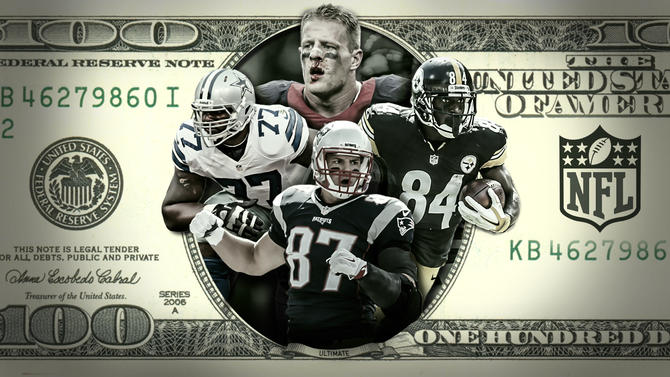
Roster building philosophy: Key ingredients
There's an old adage of "offensive sells tickets, defense wins games." It was a guiding principle in assembling the roster. Putting pressure on the opposing quarterbacks was emphasized just like it is in the actual draft. More often than not, a pass rusher is the first defensive player selected. Excellent pass coverage was a necessity in case the pass rush can be contained. Versatility with defensive players was also an important consideration.
Obviously, choosing an elite quarterback was a top priority since the NFL has increasingly become a quarterback driven league. Notwithstanding the Denver Broncos winning Super Bowl 50 because of its defense, sustained NFL success is difficult without a good quarterback.
Long range planning wasn't taken into account so worrying about 2017 salary cap obligations, the amount of cap room that could be carried over, expiring contracts and drafting players that might develop into starters in the future wasn't necessary. Different choices would have been made if these aspects had been a consideration.
Here's the team I assembled with some of my thoughts behind the selections. The 2016 salary cap number for each player is in parentheses.
Offense
QB: Aaron Rodgers, Green Bay Packers ($19.25 Million)
The 2014 NFL MVP gets the nod despite a down 2015 season (by his standards). He had his lowest completion percentage (60.7), passer rating (92.7) and yards per pass attempt (6.7) since becoming a starter. Rodgers' cap number isn't outlandish. "Tom Brady's four-game suspension because of Deflategate prevented him from getting serious consideration." It's the 10th highest quarterback figure for 2016. His cap number almost $5.5 million less than Rodgers'.
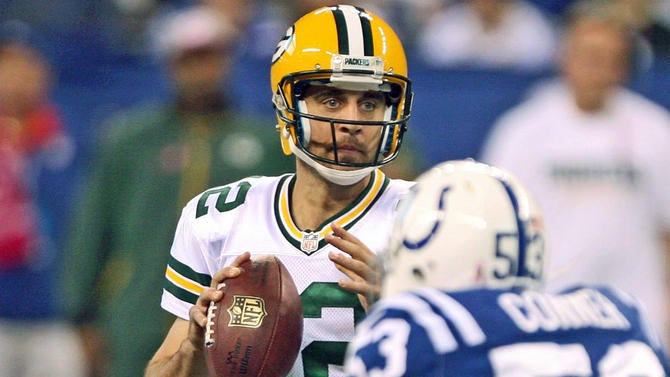
RB: David Johnson, Arizona Cardinals ($594,843)
Cost and low mileage were the primary considerations at running back. Johnson, a 2015 third-round pick, will lead a running back by committee approach. He has drawn comparisons to Marshall Faulk because of his dual threat capabilities.
WR: Antonio Brown, Pittsburgh Steelers ($11,884,503)
The best wide receiver in football was a must. Brown shatters the NFL single season receptions and receiving yards records if quarterback Ben Roethlisberger doesn't miss four games due to injury last season. His 16 game totals with a healthy Roethlisberger projected to 158 catches, 2,132 receiving yards and 13 touchdown receptions. Low cap numbers were a requirement for the other two starting wideouts because of Brown's cost.
WR: DeAndre Hopkins, Houston Texans ($2,431,522)
Hopkins had a remarkable 2015 season (111 catches/1,521 yards/11 touchdowns) especially considering he had a bunch of mediocre at best quarterbacks (Brian Hoyer, Ryan Mallett, Brandon Weeden and T.J. Yates) throwing to him.
WR: Allen Robinson, Jacksonville Jaguars ($963,750)
Robinson became the first Jaguars player to top 1,000 receiving yards last season (1,400) since Jimmy Smith in 2005. He set a single season franchise record with 14 touchdown receptions.
TE: Rob Gronkowski, New England Patriots ($6,624,990)
Gronkowski was a no brainer pick because he is the ultimate mismatch in the passing game. Over the last two years, Gronkowski leads tight ends with 2,300 receiving yards and 23 touchdown receptions. The 23 touchdowns are tied for second in the NFL with Antonio Brown. His 2,300 yards are 10th in the NFL during this span. Unlike most great pass catching tight ends, Gronkowski is also an excellent blocker.
LT: Tyron Smith, Dallas Cowboys ($6,805,655)
Smith won a close call over Joe Thomas. The every team representation requirement almost swung the choice to Thomas since he is the Cleveland Browns' best player. The $2.7 million cap number difference in Smith's favor was the deciding factor.
LG: Gabe Jackson, Oakland Raiders ($769,084)
It's hard to find a better value at left guard than Oakland's 2014 third round pick. Trai Turner, a Carolina Panthers 2014 third round pick, doesn't have the track record at left guard to be choice over Jackson.
C: Joe Berger, Minnesota Vikings ($1.435 Million)
Berger played at a Pro Bowl level in 2015 filling in for John Sullivan, who missed the season with a back injury. Sullivan losing a preseason competition with Berger for the center job led to his release.
RG: Marshal Yanda, Baltimore Ravens ($4,011,662)
The game's best interior offensive lineman is always a welcome addition when he doesn't have an exorbitant cap number.
RT: Mitchell Schwartz, Kansas City Chiefs ($2.4 Million)
It came down to Schwartz and Ryan Schraeder (Atlanta Falcons) whose cap numbers is almost the same. Schwartz holding Super Bowl 50 MVP Von Miller to one quarterback pressure in Week 6 was a factor in the decision.
Defense
DE: Khalil Mack, Oakland Raiders ($5,099,968)
The fifth-overall pick in 2014 quickly became a dominant run defender as a rookie. He made tremendous strides rushing the passer during his sophomore campaign as he was second in the NFL last season with 15 sacks while continuing to be outstanding against the run. Mack appears to be just scratching the surface of his talent despite becoming the first player in NFL history to earn first team All-Pro honors at two different positions during the same season (defensive end and outside linebacker) in 2015.
DT: J.J. Watt, Houston Texans ($14,506,045)
No team can be complete without the modern day Reggie White. Watt will line up everywhere on the defensive line. He'll spend considerable time as an edge rusher on obvious passing downs.
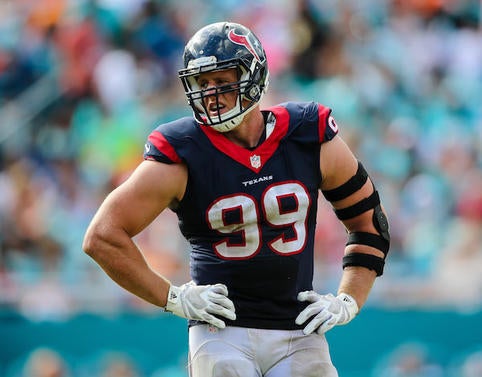
DT Brandon Williams, Baltimore Ravens ($1,802,045)
Williams earned a spot because he's one of the NFL's best run stuffing interior defensive linemen. Since the 2013 third-round pick is in the final year of his rookie contract, he's a much better value than Damon Harrison (New York Giants), Linval Joseph (Minnesota Vikings) or Dan Williams (Oakland Raiders).
DE: Michael Bennett, Seattle Seahawks ($7 Million)
Bennett's is one the NFL's most underpaid players because of his four year, $28.5 million contract. He'll become an interior rusher on passing downs like he does with the Seahawks.
WLB: Sean Lee, Dallas Cowboys ($6,206,045)
Lee moved from middle linebacker to the weakside last season in an effort to keep him healthy. He made a smooth transition and his 14 games played were the most since 2011.
MLB: Luke Kuechly, Carolina Panthers ($6,005,460)
The 2012 ninth-overall pick is the gold standard for inside linebacker. He's kept Watt from a four-year reign as NFL Defensive Player of Year by winning the award in 2013.
SLB: Jamie Collins, New England Patriots ($1,202,143)
Collins has unmatched versatility as a linebacker. He is able to cover bigger wide receivers, tight ends and running backs while also being a force against the run that is capable of rushing the passer.
CB: Patrick Peterson, Arizona Cardinals ($13,072,379)
Peterson is the pick for shutdown cornerback over Richard Sherman. He only allowed 47.7 percent of passes thrown at him to be completed, which was second in the NFL (minimum of 60 attempts) behind Darrelle Revis, according to PFF. Peterson's cap number is also approximately $1.7 million lower the Sherman's. Revis wasn't an option because of his $17 million cap number.
CB: Chris Harris, Denver Broncos ($9 Million)
Harris may be the most underrated cornerback in the NFL. He will play on the outside in the traditional base defense. Harris will move to the slot where he excels in multiple wide receiver sets.
FS: Malcolm Jenkins, Philadelphia Eagles ($5,672,518)
Something had to give in the secondary because of the cost of the cornerbacks. The 2015 first time Pro Bowler was more affordable than perennial All-Pro Earl Thomas ($9,901,170) and Devin McCourty ($7,942,765).
SS: Patrick Chung, New England Patriots ($3,192,180)
Chung has quietly become one the league's better strong safeties in his second go around with the Patriots after an uneventful one year stint in Philadelphia. He's moderately priced also. By contrast, Reshad Jones' 2016 cap number is slightly over two and a half times greater than Chung's.
Specialists
K: Dan Bailey, Dallas Cowboys ($3,306,045)
P: Sam Martin, Detroit Lions ($720,925)
LS: Morgan Cox (946,240)
KR: David Johnson
PR: Antonio Brown or Patrick Peterson
Bailey is the most accurate kicker in NFL history with a 90.6 percent conversion rate on field goals (minimum of 100 made). He was perfect on his 25 extra points in 2015 despite rule changes making them 33 yard attempts. Martin was the best cheap punter available. The 2013 fifth-round pick's net punting average of 42.0 yards was fourth in the NFL last season. Cox earned a Pro Bowl berth in 2015.
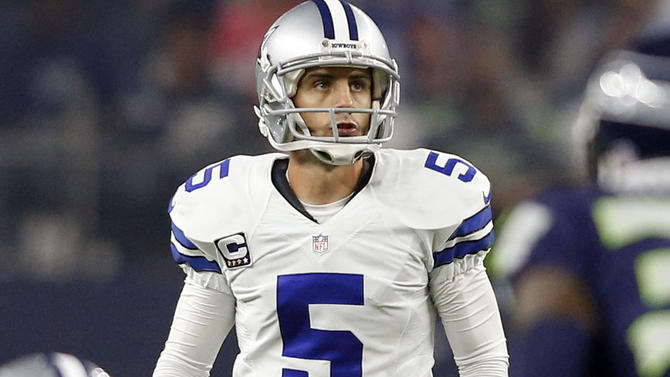
The reserves
Quarterback
- A.J. McCarron, Cincinnati Bengals ($650,288)
- The 2014 fifth-round pick demonstrated he could be a capable NFL quarterback while filling in for an injured Andy Dalton at the end of the 2015 season. A third quarterback will be on the practice squad.
Running Backs
- Thomas Rawls, Seattle Seahawks ($536,245)
- Theo Riddick, Detroit Lions ($703,600)
- Jeremy Langford, Chicago Bears ($667,146)
- Derek Watt, San Diego Chargers ($531,045)
- Rawls will split carries with Johnson. The 2015 undrafted free agent emerged as a successor to Marshawn Lynch, who has retired, before a broken ankle in Week 14 ended his season. Rawls led NFL running backs with 5.6 yards per carry. Riddick will operate as the third down back despite Johnson's receiving skills. His 80 catches in 2015 tied for the NFL lead among running backs. Langford provides depth as ball carrier. Watt, who is J.J.'s younger brother, is the lone fullback.
Receivers
- Corey Coleman, Cleveland Browns ($2,119,088)
- Tajae Sharpe, Tennessee Titans ($518,721)
- Quincy Enunwa, New York Jets ($531,045)
- Coleman, a 2016 first-round pick, may lead the Browns in receiving as a rookie but he's the fourth wide receiver. Sharpe's quick ascent up Tennessee's depth chart into the starting lineup as fifth-round pick is impressive. Enunwa's flexibility is useful. He can line up in the slot, as an H-Back or play tight end in a pinch.
Tight Ends
- Will Tye, New York Giants ($531,045)
- Jim Dray, Buffalo Bills ($686,240)
- Tye was an all-rookie selection in 2015 despite beginning the season on the practice squad. Dray functions as a blocking tight end. Since he has a minimum salary benefit contract, his $760,000 base salary is counting on the cap at the $600,000.
Offensive Line
- J.C. Tretter, Green Bay Packers ($784,827)
- Andrew Tiller, San Francisco 49ers ($606,045)
- Denzelle Good, Indianapolis Colts ($543,656)
- Alex Lewis, Baltimore Ravens ($572,974)
- Versatility was a requirement to be a backup. Tretter has assumed Green Bay's starting center position while Corey Linsley, the incumbent, begins the season on the Physically Unable To Perform list because of a hamstring injury. He's capable of playing practically everywhere on the line. He started a playoff game last season at left tackle while David Bakhtiari was recovering from an ankle injury. Tiller was displaced at right guard during the preseason when Anthony Davis, formerly a right tackle, ended his one year retirement. Good filled in for Anthony Castonzo at left tackle for three games late last season before settling in at right guard this year. Lewis, a 2016 fourth-round pick is opening the season at left guard, after spending his last two years in college at left tackle.
Defensive Ends
- Jacquies Smith, Tampa Bay Buccaneers ($605,850)
- Ethan Westbrook, Los Angeles Rams ($612,908)
- Frank Clark, Seattle Seahawks ($854,278)
- Clark, Smith and Westbrook provide plenty of situational pass rushing options. Smith's seven sacks were second on Tampa Bay in 2015. He will likely see a decrease in playing time with the addition of Robert Ayers and Noah Spence. Westbrook can play either end or tackle on passing downs. Clark should see increased playing time with the Seahawks because of Bruce Irvin's departure in free agency.
Defensive Tackles
- Tom Johnson, Minnesota Vikings ($2.35 Million)
- Grady Jarrett, Atlanta Falcons ($593,203)
- Johnson has proven to be one of the NFL's better rotational interior pass rushers during his two years with the Vikings. Jarrett showed his ability to stuff the run in limited snaps last year as a rookie.
Linebackers
- Myles Jack, Jacksonville Jaguars ($1,151,716)
- Craig Robertson, New Orleans Saints ($1.2 Million)
- Shaquil Barrett, Denver Broncos ($530,850)
- Jacksonville may have gotten one of the steals of this year's draft as knee concerns were responsible for Jack slipping to the second round. He's capable of playing any linebacker spot. Robertson joined the Saints in free agency as a reserve after starting 34 games during the previous three seasons in Cleveland. Barrett was a pleasant surprise as a pass rusher last season.
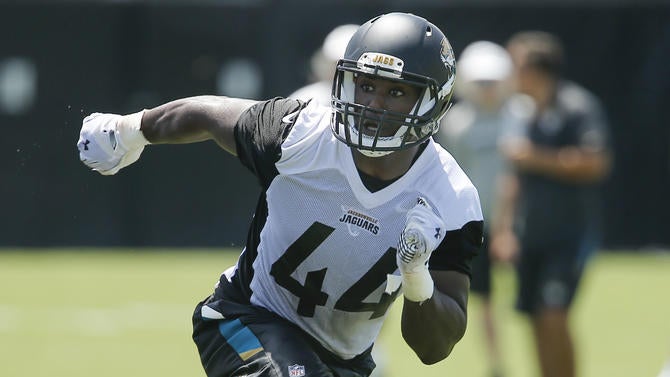
Cornerbacks
- Marcus Peters, Kansas City Chiefs ($2,181,533)
- DeShawn Shead, Seattle Seahawks ($606,240)
- Brandon Williams, Arizona Cardinals ($618,174)
- Greg Toler, Washington Redskins ($684,680)
- Peters, who was the NFL co-leader with eight interceptions last season, is really the 12th starter. After earning a Pro Bowl berth in his first season as a starter with the Patriots, Malcolm Butler was tempting because of his $604,875 cap number. The 2015 Defensive Rookie of the Year will see plenty of time on the outside when three or more wide receivers are on the field. Shead is expected to play a prominent role with the Legion of Boom after initially making his mark on special teams. Williams, a 2016 third-round pick, will see plenty of balls thrown his way starting opposing of Peterson in Arizona. Toler is a former starter with Arizona and Indianapolis that signed a minimum contract with Washington in free agency to be a nickel back.
Safeties
- Michael Thomas, Miami Dolphins (681,045)
- Jayron Kearse, Minnesota Vikings ($466,056)
- Thomas is a special teams ace who can also make plays on defense. Shead is another option at safety because of his versatility. Kearse's athleticism will be an asset on special teams.
Final thoughts ... and numbers
TOTAL salary cap room spaced used: (53 Players): $157,967,700
REMAINING salary cap room: $3,692,300
- OFFENSE (25 Players): $67,095,349
- DEFENSE (25 Players): $85,899,141
- SPECIALISTS (3 Players): $4,445,480
All of the cap room wasn't used. A small cushion was left for a full practice squad of 10 players (approximately $1.2 million) and to sign players when the inevitable injuries happen during the season.
In keeping with the guiding roster principle, there was a much greater allocation of cap resources on defense. The Seahawks and Ravens lead the way with four players each.
The lack of true top flight slot wide receiver could be an issue. Brown will operate out of the slot more than he does with Pittsburgh because of the strength of Hopkins and Robinson as outside wide receivers. Coleman will also be called upon to work in the slot. Although the safeties are good, they aren't quite the equal of the starting cornerbacks.













